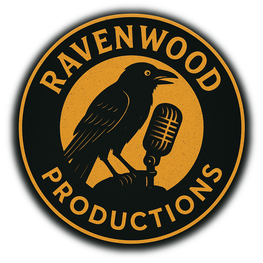Blog Post: Unraveling the Curse of the Hexham Heads

Author: Juniper Ravenwood
A Chilling Discovery in Hexham
In February 1971, two young brothers, Colin and Leslie Robson, were digging in their garden at 3 Rede Avenue, Hexham, Northumberland, when they stumbled upon two small stone heads, each about 6 cm tall. Carved from greenish-grey stone with quartz crystals, one head, nicknamed “the boy,” had a skull-like, masculine face with striped hair, while the other, called “the girl” or “hag,” featured bulging eyes, a beaked nose, and traces of yellow and red pigment. These eerie carvings, now known as the Hexham Heads, seemed like innocent artifacts at first. But their discovery marked the beginning of a terrifying saga that would haunt families, scholars, and an entire community.
The Curse Unleashed
Almost immediately after the heads were brought into the Robson home, strange things began to happen. Chairs slid across floors, glass bottles shattered without cause, and the heads themselves seemed to move, as if watching the family. Colin woke one night, crying, claiming invisible hands had pulled his hair. The disturbances weren’t confined to the Robsons. Neighbors, the Dodds, reported a creature—half-man, half-sheep—creeping through their home, its eyes glinting with malice. This entity, described as both animalistic and humanoid, left the family shaken. The heads were quickly becoming the center of a paranormal storm, their presence an ominous trigger for chaos.
Ancient Relics or Supernatural Vessels?
The heads found their way to Dr. Anne Ross, a Celtic scholar who believed they were 1,800-year-old artifacts tied to ancient head cults, where such carvings symbolized divinity or the soul. But even Ross wasn’t immune to their power. She awoke to find a part-wolf, part-man figure in her home, and her daughter, Berenice, encountered the same creature. Ross felt an oppressive presence, her study door bursting open inexplicably. Some linked the entity to the Hexham Wolf of 1904, a spectral beast blamed for local livestock deaths. Dr. Don Robins, a chemist, proposed the Stone Tape theory, suggesting the heads’ quartz crystals could store psychic echoes of ancient rituals, replaying them like a supernatural recording. Were the heads conduits for spirits, or did they awaken something darker?
A Skeptical Twist
In 1974, Desmond Craigie, a former resident of the Robsons’ address, claimed he carved the heads in 1956 as toys for his daughter, using concrete, not ancient stone. His story cast doubt on their age and origins, but it didn’t explain the paranormal chaos. Craigie couldn’t replicate the heads when challenged, and their craftsmanship seemed too intricate for simple toys. Could modern objects absorb energies from Hexham’s ancient landscape, near Hadrian’s Wall? Or was the curse a product of fear and suggestion? The skepticism adds a layer of intrigue, but it doesn’t erase the terror experienced by so many.
A Lasting Mystery
By 1978, the Hexham Heads vanished after being studied by a dowser named Frank Hyde. No one knows where they are—buried, hidden, or destroyed. Their legend grew through a 1976 BBC Nationwide report, which paired their story with clips from The Curse of the Werewolf, cementing their place in British folklore. Today, the Hexham Heads remain an enigma: Celtic relics, cursed objects, or a haunting hoax? Their disappearance only deepens the mystery, leaving us to wonder if they’re still out there, waiting to be found, their curse ready to stir once more.
Tune In and Share Your Thoughts
Listen to Episode 137 of The Shadow Frequency to hear Matt Wilson unravel this chilling tale, complete with listener reactions and my own spooky commentary. Visit shadowfrequencypodcast.com to explore our Shadow Blog, leave a voicemail, or grab some swag. What do you think—did the Hexham Heads carry a curse, or were they misunderstood? Email us at shadowpodcast@protonmail.com or join the conversation on our socials. Stay spooky, and keep exploring the shadows with us!
Signed,
Juniper Ravenwood























